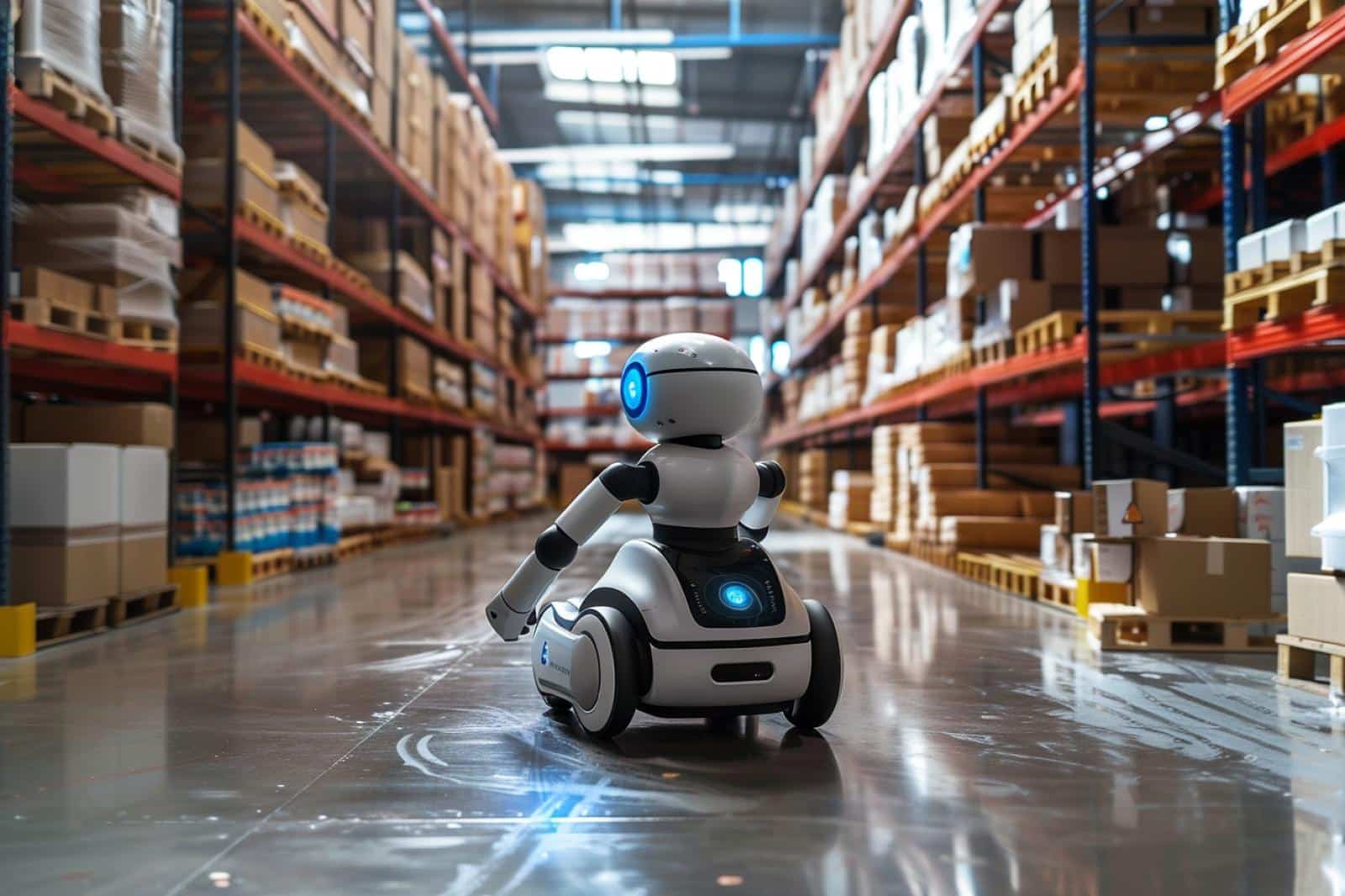How Are Autonomous Bots Transforming Warehouse and Inventory Management?

Hello, there! Ever wondered how your Amazon order makes its way from a warehouse shelf to your front door? The secret lies in the harmonious dance of autonomous bots working tirelessly behind the scenes. As companies race to make supply chains more efficient, robots and automation have become integral components in warehouse and inventory management. Let’s dive into the world of robotics and its impact on today’s warehouses.
The Rise of Robotics in Warehouses
At first glance, a modern warehouse may look like a scene straight out of a sci-fi movie with robots gliding smoothly around the floor. However, this isn’t a futuristic fantasy; it’s reality. The rise of robotics in warehouses is a relatively recent phenomenon, and a transformative one at that.
Also read : What Role Can AI Play in Enhancing the Creativity of Writers and Content Creators?
In the past, warehouse operations were labor-intensive, involving manual picking and sorting of inventory. Nowadays, though, autonomous mobile robots (AMRs) are becoming increasingly common. These bots are programmed to perform various tasks such as moving goods around the warehouse, picking items for orders, and even assisting in inventory management.
Their introduction into the world of logistics has resulted in significant efficiency gains. Companies can now process orders faster, reduce errors, and even operate 24/7 – something human workers simply cannot do.
Also to discover : How Is Digital Phenotyping Transforming Mental Health Assessment?
Autonomy and Efficiency: The Perfect Duo
If you’ve ever worked in logistics or inventory management, you’ll know that time is of the essence. Every second counts, and delays can result in lost sales and unhappy customers. That’s where autonomous robots come in.
Autonomous bots can work at a consistent pace, unaffected by fatigue or distractions. They can navigate warehouses with ease, picking items quickly and accurately. Their precision and speed boost efficiency, helping companies to streamline operations and reduce costs.
Plus, these robots come with sophisticated data management systems. They can track inventory in real-time, automatically updating as items move in and out of the warehouse. This level of automation minimizes the risk of stock discrepancies and helps businesses maintain accurate inventory records.
The Impact of Robots on Warehouse Management
As you can see, autonomous bots have a significant impact on warehouse management, but it doesn’t stop with improved efficiency and error reduction. The use of robots also changes the way warehouses are designed and operated.
Traditional warehouse layouts, designed with human workers in mind, are now being rethought. Robotics-friendly layouts prioritize ease of movement for bots, maximizing their productivity. With the ability to work in narrower aisles and reach higher shelves, robots can make better use of space, allowing for a higher density of inventory.
Moreover, robots can also work in environments that may be hazardous or uncomfortable for humans. They can operate in darker, cooler, or warmer conditions, expanding the range of products that can be stored and processed in a warehouse.
Revolutionizing Order Picking and Supply Chain
Order picking is one of the most critical and time-consuming tasks in a warehouse. It involves locating and retrieving the products needed to fulfill an order. It’s a task that requires accuracy and speed, and that’s where robots truly shine.
Autonomous bots equipped with advanced sensors and artificial intelligence can streamline the picking process. They can locate items quickly, move swiftly around the warehouse, and pick with precision. This technology reduces the chances of errors, ensuring orders are fulfilled correctly and promptly.
Beyond the warehouse, autonomous bots are also transforming the larger supply chain. By automating inventory management and order picking, businesses can better predict demand, avoid overstocking or understocking, and deliver a more reliable service to their customers.
A Glimpse into the Future: Autonomous Bots and Warehouses
The future of warehouse management is already taking shape in the form of autonomous bots. But we’re just scratching the surface of their potential. As technology continues to advance, we can expect to see more sophisticated and capable bots.
Picture this: drones flying overhead, scanning barcodes and keeping track of inventory; ground robots moving items around, picking orders, and restocking shelves; and all of this happening with minimal human intervention.
In addition to AI and machine learning, technologies like the Internet of Things and 5G are also likely to play a critical role in this evolution, enabling real-time data exchange and communication between robots, systems, and human operators.
In this brave new world of autonomous warehouses, businesses can look forward to even more significant efficiency gains, cost savings, and improved customer service. While this may seem a distant reality, it’s closer than you think.
The Role of Data Analytics in Robotics Warehouse Operations
In the world of warehouse robotics, data is king. Everything from inventory management to order fulfillment relies heavily on data analytics. Autonomous robots are not just designed for physical tasks but are also equipped to collect and analyze vast amounts of data in real time.
As autonomous bots move around the warehouse, they are constantly scanning and collecting data. This data encompasses the location and quantity of items, the path taken to retrieve an item, and the time taken to perform tasks. All of this information is continuously fed into a central management system. This real-time data availability enables warehouse managers to make informed decisions promptly, whether it’s reordering stock, rerouting bots, or reorganizing warehouse layouts for better efficiency.
Moreover, bots equipped with machine learning capabilities can leverage this data to improve performance over time. They can analyze patterns and correlations from historical data to predict future demand, optimize picking paths, and even self-diagnose technical issues. This predictive analysis can result in cost savings, better inventory control, and improved order fulfillment speed, leading to higher customer satisfaction.
Beyond the individual warehouse, the data collected by bots can also be shared across the supply chain, enhancing visibility and coordination among suppliers, manufacturers, and retailers. This interconnectivity allows for a more integrated and responsive supply chain, reducing the risk of bottlenecks and ensuring a smoother flow of goods from the warehouse to the customer’s door.
The Ethical and Employment Implications of Warehouse Automation
While the benefits of autonomous mobile robots in warehouse operations are undeniable, the shift towards automation also raises ethical and employment concerns. The fear that robots will replace human jobs, especially in manual labor-intensive industries like warehousing, is prevalent.
However, instead of viewing robotics automation as a threat, it can be seen as an opportunity for workforce upskilling and job transformation. As autonomous bots take over repetitive and physically demanding tasks, human workers can be retrained for more complex and value-added roles such as supervising robotic systems, analyzing data, and managing customer relationships.
Moreover, the introduction of robots in the warehouse has the potential to create a safer work environment. With robots handling heavy lifting and operating in hazardous conditions, the risk of workplace injuries can be minimized.
On the ethical front, businesses must adhere to responsible AI practices. This includes ensuring the privacy and security of the data collected by bots, as well as being transparent about the use of automation and its impact on employees and customers.
Conclusion: Embracing the Future of Autonomous Warehouses
The union of autonomous robots and warehouse management is a testament to the power of technology in revolutionizing industries. From improved efficiency and accuracy to real-time data analytics and safer work environments, the benefits of robotics warehouse operations are transformative.
However, the transition to fully autonomous warehouses is not without its challenges. Businesses must not only invest in the right technology and infrastructure but also address the ethical and employment implications of automation.
Despite these challenges, the future of warehouse operations is undoubtedly intertwined with robotics. As we continue to advance in AI, machine learning, and other related technologies, autonomous bots will become even more intelligent and efficient, pushing the boundaries of what’s possible in warehouse management.
As we embrace this future, the key will be to balance automation with human skills and ethics, ensuring that the rise of the robots benefits not just businesses, but also employees, customers, and society at large.
